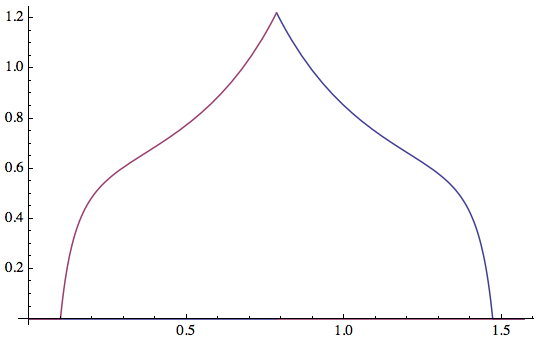Consider a random walk from the $\mathbb{Z}^2$ origin $(0,0)$ to visible
(not blocked) lattice
points $p$, with a parameter $r$ a given radius of a circle centered
on $p$.
With $p$ the previous point, the next point
$p=p+(a,b)$ must have:
- $a$ and $b$ co-prime. So $p$ can see $p+(a,b)$.
- $a^2+b^2 \le r^2$. So $p$ lies in or on the radius-$r$ circle centered on $p$.
- $(a,b)$ is chosen with probability proportional to its inverse
distance squared, $1/(a^2+b^2)$.
So, long steps are possible but increasingly rare with the length of the step.
Concerning this last point, see
"Illumination from visible lattice points with inverse square intensity".
The walk is something akin to a walk between (lattice) stars.
Example:
$r=10$, $n=100$ steps. Green is origin $(0,0)$. Last point $(-16, -7)$ red.
Q1. For a fixed $r$, is this walk recurrent, i.e., does it return
to the origin with probability $1$?
If instead transient, what is the probability of returning
to the origin?
Q2. What is the behavior of the walk as $r \to \infty$?
Q3. What is the situation in $\mathbb{Z}^3$,
where it is known that a standard random walk returns
to the the origin with probability $34$%?


Best Answer
The step distribution $\mu$ of your random walk is finitely supported and symmetric, so that all standard results are applicable. In particular, your random walk is recurrent for any value of the parameter $r$.